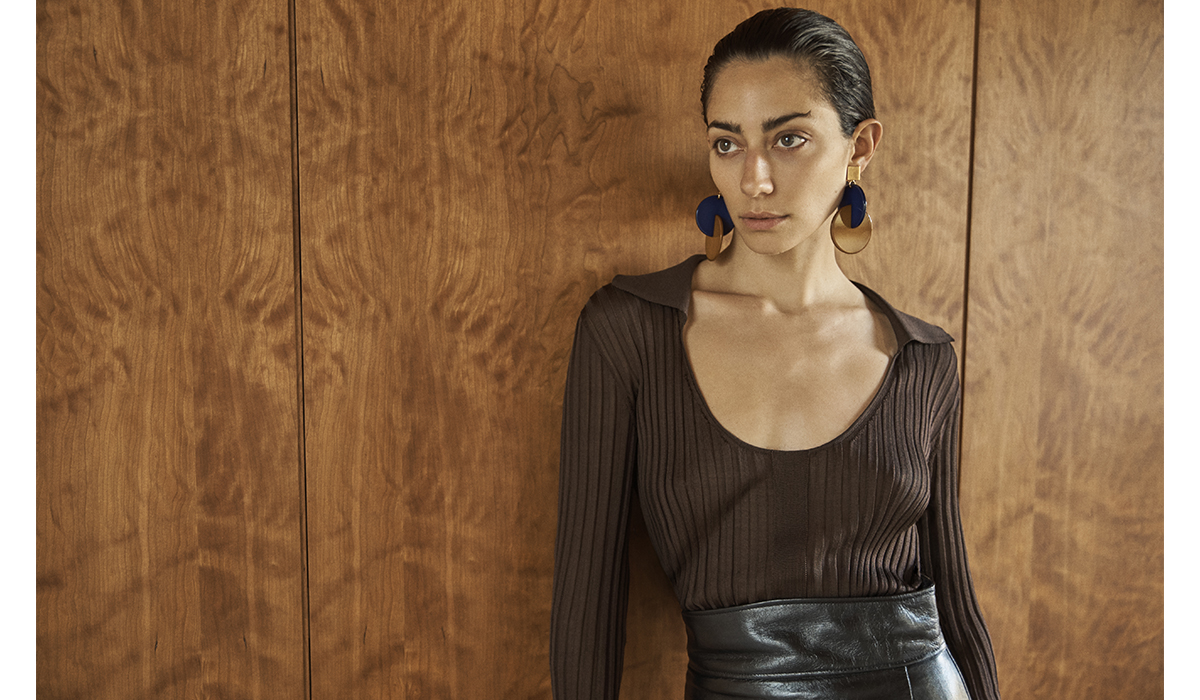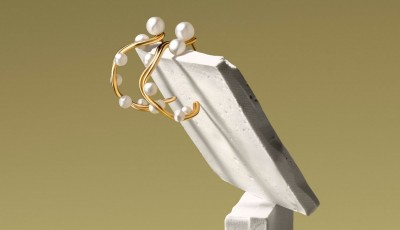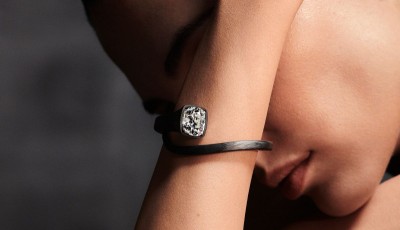Farfetch: The Post-Covid Strategies
Min Lee, Farfetch Senior Category Development Manager for Jewelry, explains the strategy of the group to support the boutiques post pandemic, in their digital marketing process
Far fetch hosts a wide selection of jewelers, from Pomellato to Delfina Delettrez, Jacquie Aiche, Alighieri, just to mention a few... How do you deal with them? We are lucky enough to have a wide curation of fashion, demi-fine and fine jewelry. We have a range of brands from emerging and niche, to well-known global fine jewelry maisons. We work with both boutiques and brands directly for products. Some of our global top sellers are truly global well-known brands, but we do have a handful of niche brands. Having a strong supply from both brands and boutiques is very important for the jewelry category. Many of our most innovative designs and new ways to adorn the body with fine jewelry come from emerging designers. Young brands still rely on taste-making or specialist boutiques to launch their business, and we are lucky to work with these boutiques so as to elevate the presence globally of the young designers. Our strong relationship with leading fine jewelry houses or established brands allows us to present, share and sell their meticulously crafted pieces to customers who love their brand around the world. We can ship directly to countries that the brands themselves are unable to ship to. Our logistics partners who understand high value fine jewelry, allow us to become a strong digital and logistics partner. We can communicate the iconic and heritage pieces that have been synonymous for the brand over 10, 20, or 30+ years to customers globally, who are just getting to know the brands, or are unaware of the true versatility and daily ease of their collections. We highlight the way fine jewelry is worn today for our global customers.
How can Farfetch help the jewelry boutiques in their digitalization process? As we have seen during Covid, when boutiques had to shut, their reliance and partnership with Farfetch strengthened. We welcomed this and were so pleased that we could support them even more during such a tough period of time and provide them with much marketing awareness with our #SupportBoutiques campaign as well as provide logistic support. We also provide the photography and full online support where some boutiques may just have an email account - so we can provide the full digitalization for a boutique who does not understand or is hesitant about any online operations.
What is the scenario of the jewelry industry in approaching the digital business transformation, if compared to the fashion one? Like many industries facing the global challenges of new consumer behaviour post Covid, I think the jewelry industry is embracing online more and more. Not just online selling, but also online interactions, communication, engagement and story-telling. This will continue, and I think the online selling component will increase. Some brands have always steered clear of online selling, or have been extremely restrictive of what was available to buy online. These brands are more open-minded to selling online than before. This has all been positive for an online platform like Farfetch, so we look forward to embracing and adapting to the changes everyone is facing.
Are jewelers confident in selling online? Younger brands have always been more confident about selling online and we are now seeing an increased confidence from the larger and more established brands as well. We are lucky enough to have a truly global audience, where customers buy from the larger established markets such as the US, China and greater APAC regions - but we also have loyal high spending clients from the tiniest or remotest of countries as well. Our global reach is something all partners of all sizes benefit from, and we will continue to grow this!
How do you work with Italian jewelry brands? Any differences with other markets? There is no difference in how we work with Italian brands versus any other brands. We have a strong global Brand Partnership team made of specialists for the different regions where we operate, so they have native or fluent Italian speakers as with any other region.
How does the way people shop and look at luxury products influence the way of selling of a retailer? Fine jewelry customers, like many luxury customers, are very visual and discerning. When spending these levels of money per item, the customers are attuned to looking at even more details. This is where our close up images, editorials and styled suggestions on models are so important. Jewelry has the added element of engineering and form to adorn the body, which can be quite structured or fluid depending on the construction which is quite different to fabric draping or tailoring. We need to represent these nuances the best we can on the computer screen and multiple device screens.
How would you manage the emotion of buying a luxury product through a digital platform? The customer who comes to Farfetch generally already has an idea of the brand or style they are looking for. We have customers who also revisit the site to research and carefully consider their purchases. For that reason, Farfetch is really an integral part of the emotion of buying fine jewelry because we are trying to make the process as clear as possible with model shots, clear close up images, and lifestyle imagery or editorial content.
How can Farfetch help the jewelry boutiques in their digitalization process? As we have seen during Covid, when boutiques had to shut, their reliance and partnership with Farfetch strengthened. We welcomed this and were so pleased that we could support them even more during such a tough period of time and provide them with much marketing awareness with our #SupportBoutiques campaign as well as provide logistic support. We also provide the photography and full online support where some boutiques may just have an email account - so we can provide the full digitalization for a boutique who does not understand or is hesitant about any online operations.
What is the scenario of the jewelry industry in approaching the digital business transformation, if compared to the fashion one? Like many industries facing the global challenges of new consumer behaviour post Covid, I think the jewelry industry is embracing online more and more. Not just online selling, but also online interactions, communication, engagement and story-telling. This will continue, and I think the online selling component will increase. Some brands have always steered clear of online selling, or have been extremely restrictive of what was available to buy online. These brands are more open-minded to selling online than before. This has all been positive for an online platform like Farfetch, so we look forward to embracing and adapting to the changes everyone is facing.
Are jewelers confident in selling online? Younger brands have always been more confident about selling online and we are now seeing an increased confidence from the larger and more established brands as well. We are lucky enough to have a truly global audience, where customers buy from the larger established markets such as the US, China and greater APAC regions - but we also have loyal high spending clients from the tiniest or remotest of countries as well. Our global reach is something all partners of all sizes benefit from, and we will continue to grow this!
How do you work with Italian jewelry brands? Any differences with other markets? There is no difference in how we work with Italian brands versus any other brands. We have a strong global Brand Partnership team made of specialists for the different regions where we operate, so they have native or fluent Italian speakers as with any other region.
How does the way people shop and look at luxury products influence the way of selling of a retailer? Fine jewelry customers, like many luxury customers, are very visual and discerning. When spending these levels of money per item, the customers are attuned to looking at even more details. This is where our close up images, editorials and styled suggestions on models are so important. Jewelry has the added element of engineering and form to adorn the body, which can be quite structured or fluid depending on the construction which is quite different to fabric draping or tailoring. We need to represent these nuances the best we can on the computer screen and multiple device screens.
How would you manage the emotion of buying a luxury product through a digital platform? The customer who comes to Farfetch generally already has an idea of the brand or style they are looking for. We have customers who also revisit the site to research and carefully consider their purchases. For that reason, Farfetch is really an integral part of the emotion of buying fine jewelry because we are trying to make the process as clear as possible with model shots, clear close up images, and lifestyle imagery or editorial content.






